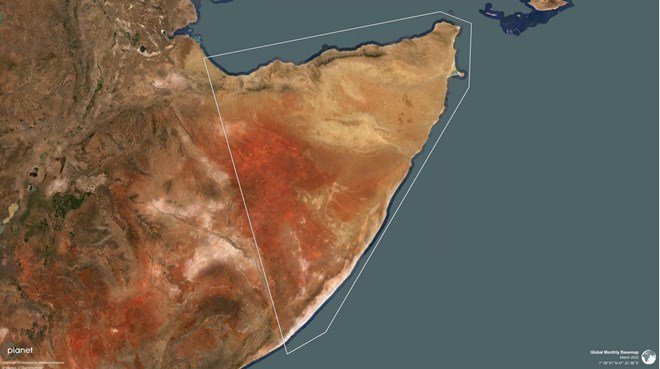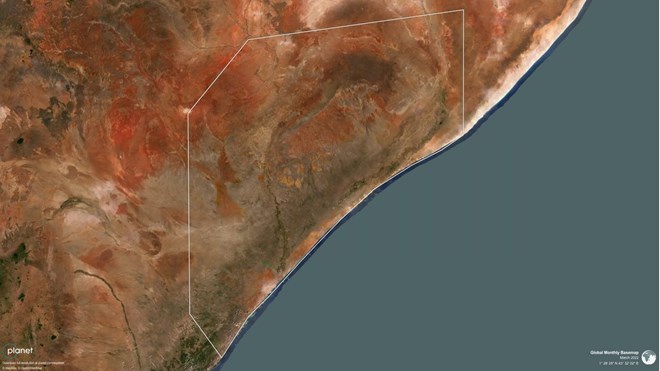
Thursday April 6, 2023

Planet Basemaps, March 2023 • This shape indicates the region of Ethiopia and Somalia in the Horn of Africa where Planet conducted an analysis of Soil Water Content using its satellite data products.
Mogadishu (HOL) - A report by Planet, co-authored by Steve Levay and Ryder Kimball, exposes the severity of the drought in the Horn of Africa using Soil Water Content (SWC) measurements.
The La Niña climate system has influenced the multi-year drought, which reduces rainfall in the Horn of Africa while increasing it in other areas like Southeast Asia. Climate change is intensifying the severity and duration of droughts, making accurate data and understanding fluctuations vital.
Planet's SWC data, as described by Levay and Kimball, provides near-real-time measurements of soil moisture, offering more accuracy than standard models based on precipitation totals. The data is collected by satellites from NASA, ESA, and JAXA and visualized in global maps, with different shades indicating varying soil moisture levels. These measurements can help policymakers assess conditions contributing to drought, flooding, and wildfires.

Planet Basemaps, March 2023 • This shape indicates a region of significant agricultural productivity in Somalia where Planet conducted an analysis of Soil Water Content trends.
SWC data paints an alarming picture. The Horn of Africa entered its sixth consecutive rainless rainy season in March, the most prolonged and damaging dry spell in the past 70 years of precipitation data. Multiple crises have converged to create a national emergency in Somalia, including political instability, rising food prices, and drought. Since 2021, dry conditions have displaced 1.3 million Somalis (nearly 8% of the country's population), leading to an estimated 43,000 excess deaths attributed to drought in 2022.
International efforts are underway to provide humanitarian aid to nearly 8.5 million Somalis in need of assistance. The World Bank is working with reinsurers to create drought risk protection programs informed by satellite data. As global weather patterns remain unpredictable and out of human control, leveraging available tools, as emphasized by Levay and Kimball, to better understand climate uncertainties and make informed decisions based on accurate data is essential.